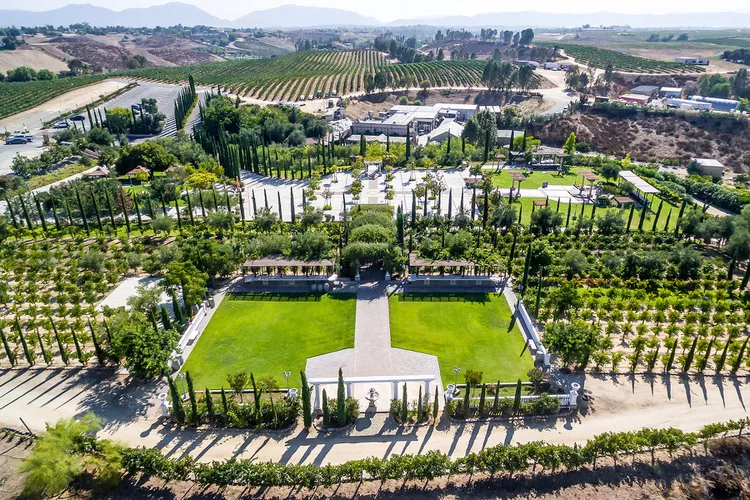Discover Southern California’s Hidden Gem Wine Region
Although the Napa and Sonoma Valleys are the most celebrated regions of California wine country, a hidden gem wine region is tucked away in the heart of Southern California — every bit as worthy of recognition. A seemingly endless expanse of coastline, soaring mountain ranges, and a mostly temperate climate account for Southern California’s ideal growing conditions for some wines of equal caliber to those of Napa and Sonoma.
Still, if you haven’t heard much about it, you’re not alone — but winemakers in Southern California are trying to change that.
Southern California comprises the South Coast American Viticultural Area (AVA) — another name for an officially recognized wine region — which includes sub-AVAs like Temecula Valley AVA, Ramona Valley AVA, and Malibu Coast AVA, to name a few. Because the pervasive myth held about Southern California’s inland wine region is that it is mostly a dry desert climate and could never produce wines with the same complexity and nuance as Napa and Sonoma, the wineries have often gone overlooked by out-of-state visitors and more serious wine aficionados.
However, in the South Coast AVA — most notably home to Temecula Valley’s expansive 33,000 acres of vineyards — award-winning wineries produce wines in a climate that nearly mimics the conditions of world-renowned wine regions like France’s Rhône Valley, as well as various parts of Tuscany. With its proximity to the Pacific Ocean, Temecula Valley’s microclimate can even be likened to that of the Mediterranean, making it an ideal area for growing grapes such as Chardonnay, Vermentino, Sangiovese, Syrah, and Viognier. When paired with its rolling hills and soil content, the low-pressure systems combine to create sunny days and cool nights that complement its granitic, mineral-rich soil — all of which help the grapes to retain higher acid content and tannins.
Must-Visit Wineries in Southern California
As nearly 50 wineries comprise the Temecula Valley AVA alone, there are ample opportunities to discover new wineries and expressions of your favorite wines. Here are just a few wineries worth checking out:
Lorimar Vineyards and Winery
Lorimar Vineyards and Winery, a Tuscan-style winery in Temecula Valley, is a 22-acre estate vineyard, where the first vines of Cabernet Sauvignon were planted in 2000. An inviting patio area allows visitors to take in the surrounding views while enjoying a wine tasting. Stop by for a red wine flight for two and sample their award-winning, fruit-forward Sangiovese, Zinfandel, Malbec, and Cabernet Sauvignon wines.
Robert Renzoni Vineyards
Robert Renzoni Vineyards — with its Tuscan villa-style tasting room and picturesque hilltop views of Temecula Valley — has a long-standing family history of winemaking in Italy, dating back to 1886. Its 12-acre vineyard contains classic Bordeaux and Italian grape varietals, including Cabernet Sauvignon, Pinot Grigio, Sangiovese, and Barbera.
Maurice Car’rie Vineyard

Known predominantly for its award-winning Sauvignon Blanc and Gewurztraminer wines, Maurice Car’rie Vineyard was among the first vineyards planted in the Temecula Valley region in 1968; today, it has more than 70 acres of vines. Visitors can enjoy a tasting flight of wine outdoors with live music on the estate’s Victorian-style farmhouse paired with its famous baked brie in garlicky sourdough bread.
Mount Palomar Winery
Founded in 1969, Mount Palomar Winery was one of the first wineries to cultivate Mediterranean grape varietals in Temecula Valley. Today, Mount Palomar Winery produces a range of wines in the classic Bordeaux and Italian styles from their 55 acres of estate grapes and 16 different grape varietals.
Milagro Winery
Traveling further south from Temecula Valley, Milagro Winery in the Ramona Valley AVA boasts more than 10,000 vines with 11 varietals of grapes on its 110-acre estate. Its wines are crafted with 100% estate-grown grapes. The drought-resistant vines are planted on the sloping hills in Ramona and cultivated in mineral-rich soil. Fun fact: Milagro’s winemaker was trained in Bordeaux and is a highly sought-after winemaker in Mexico.





